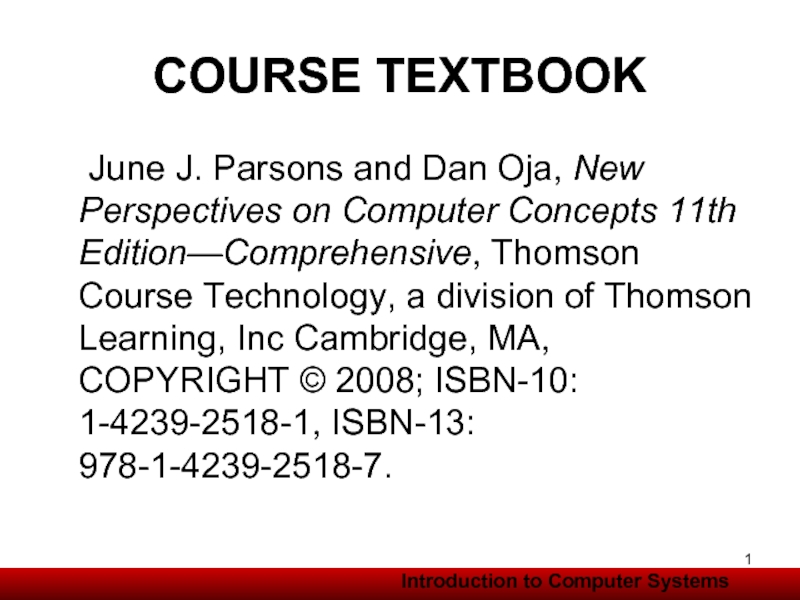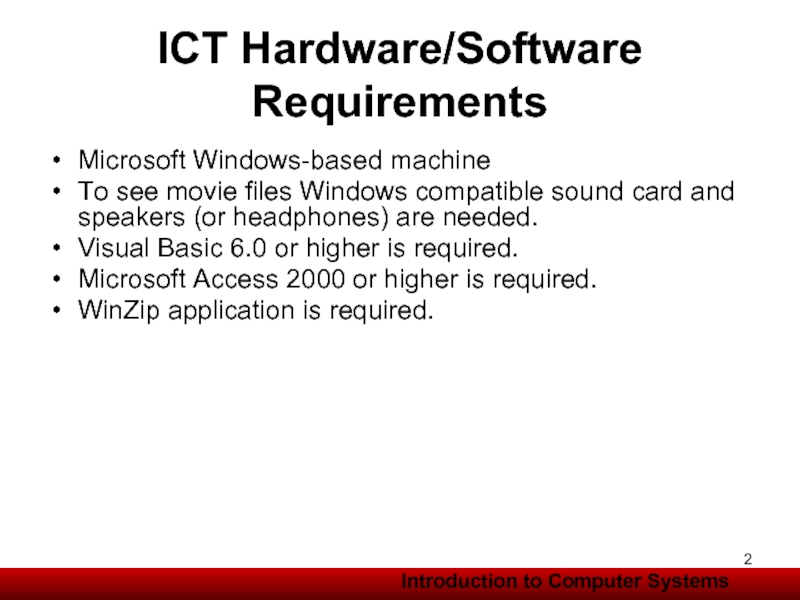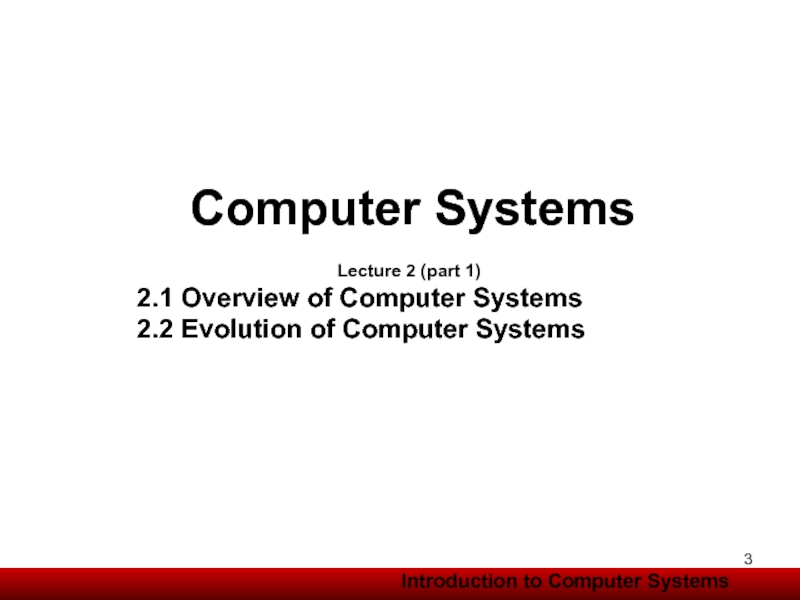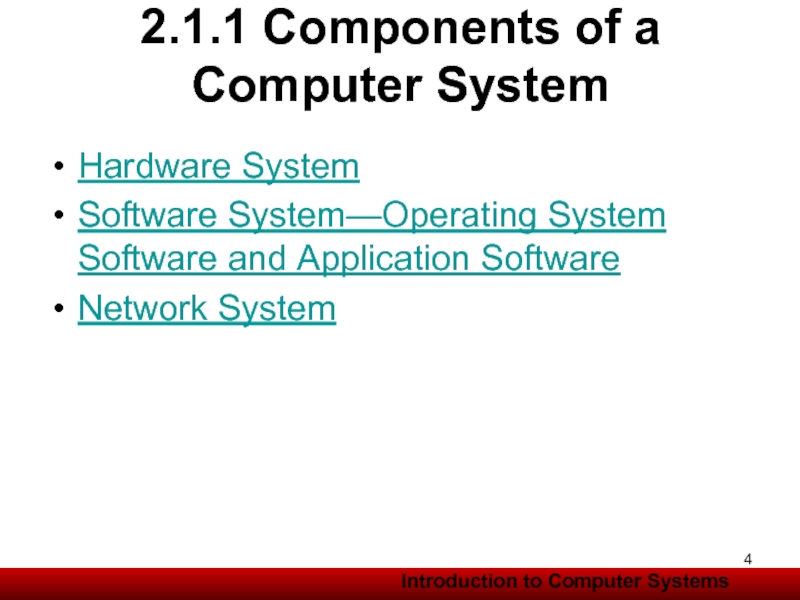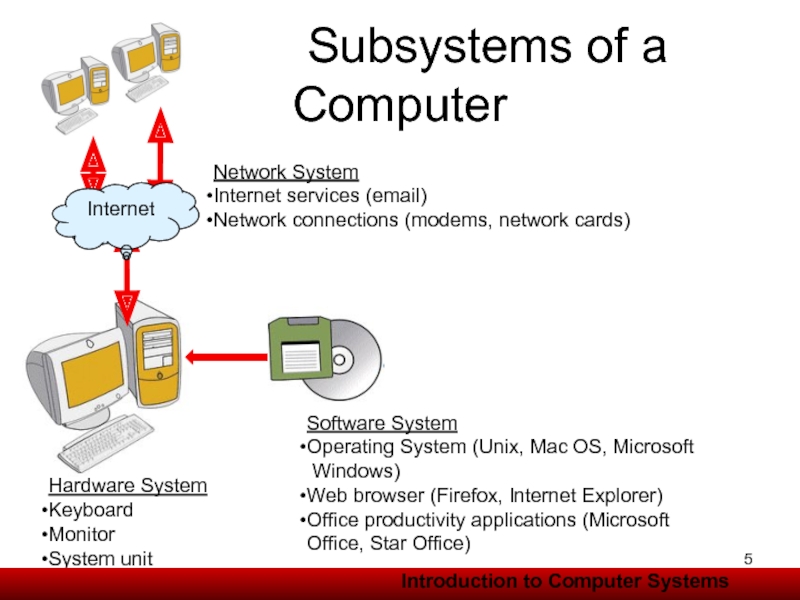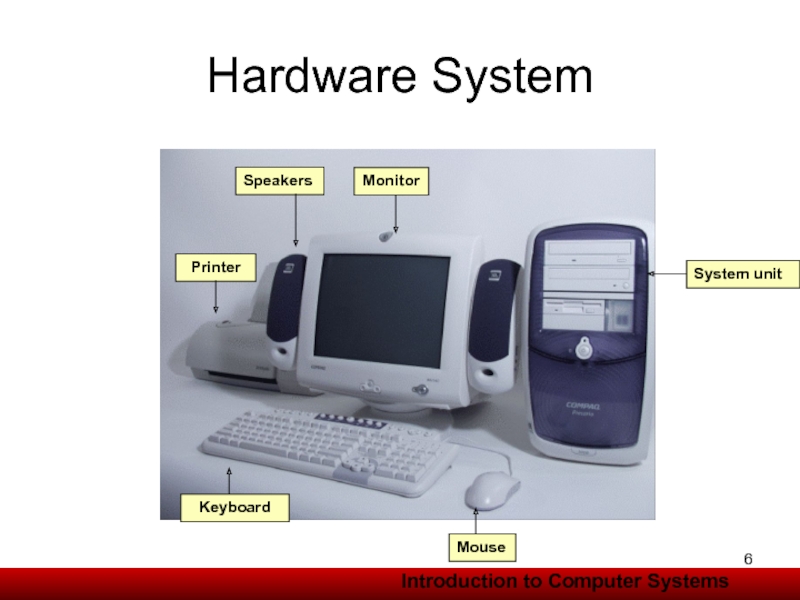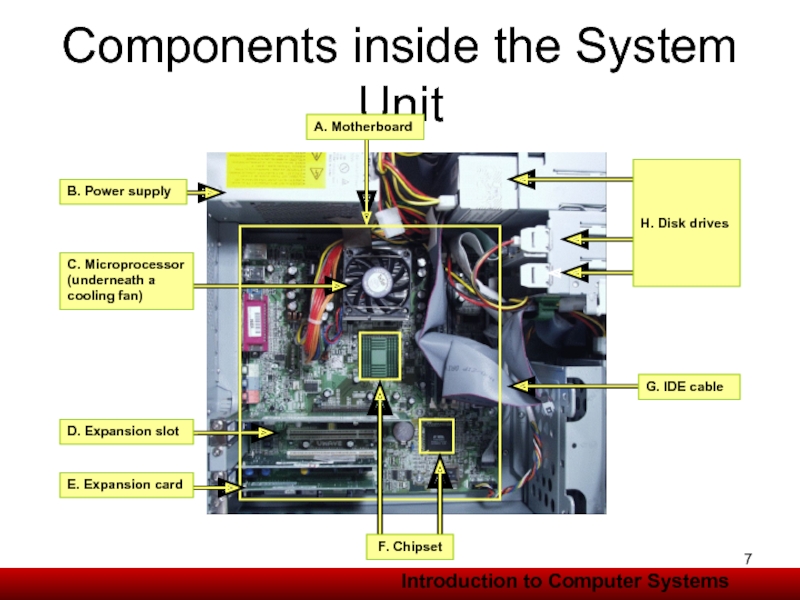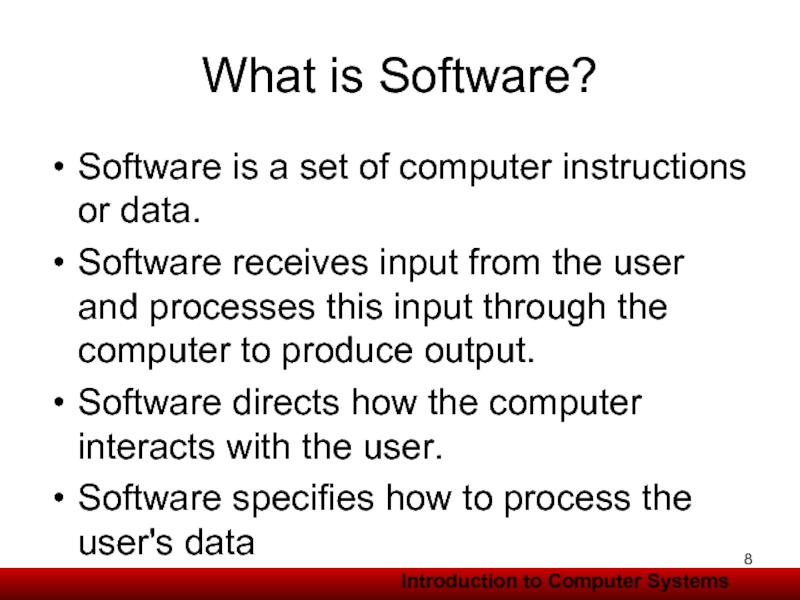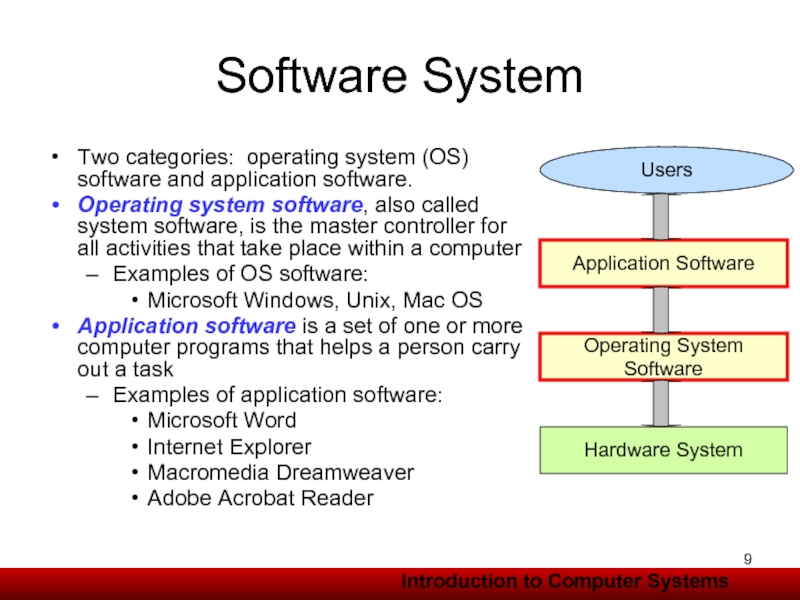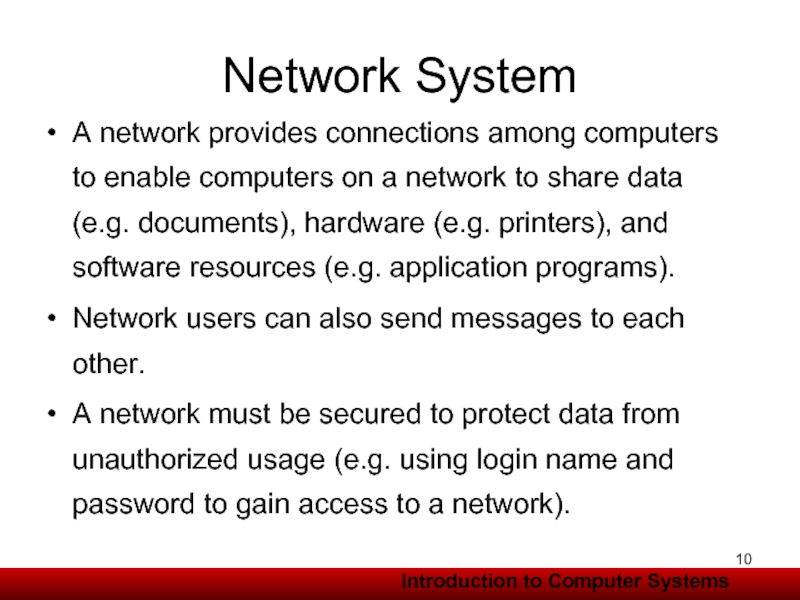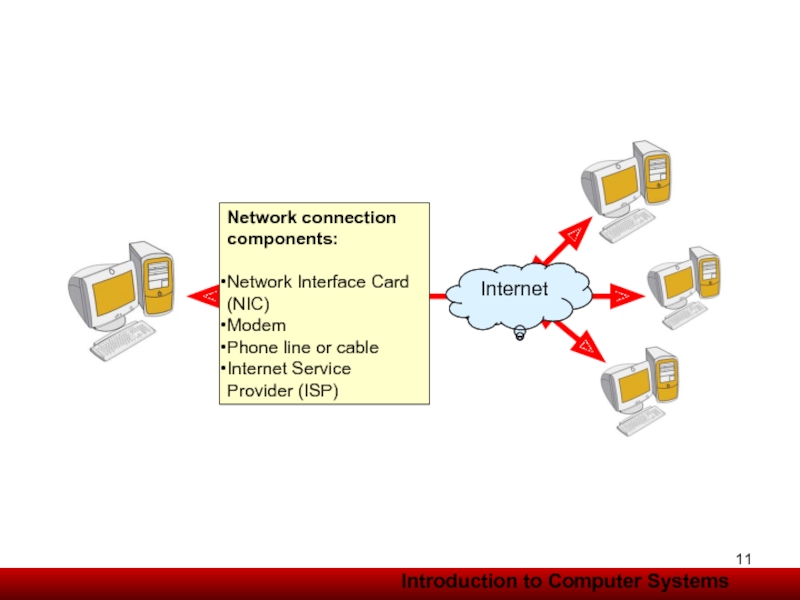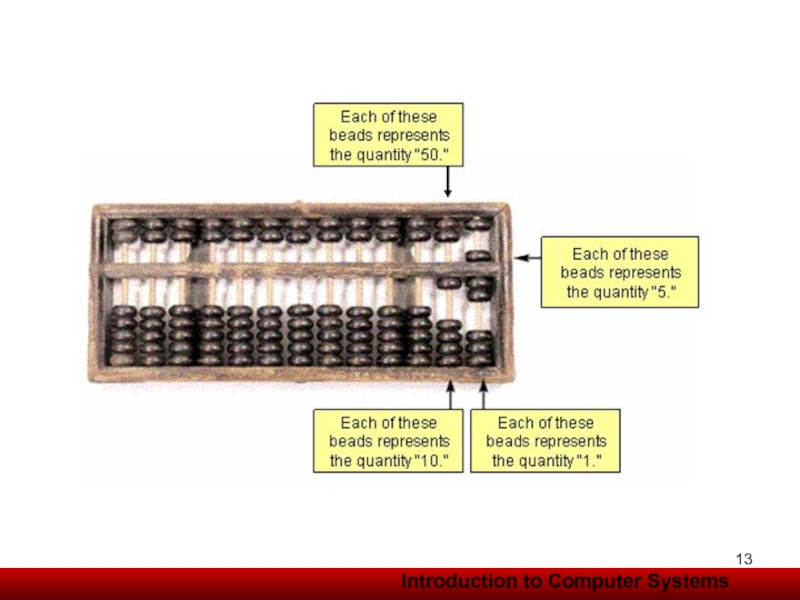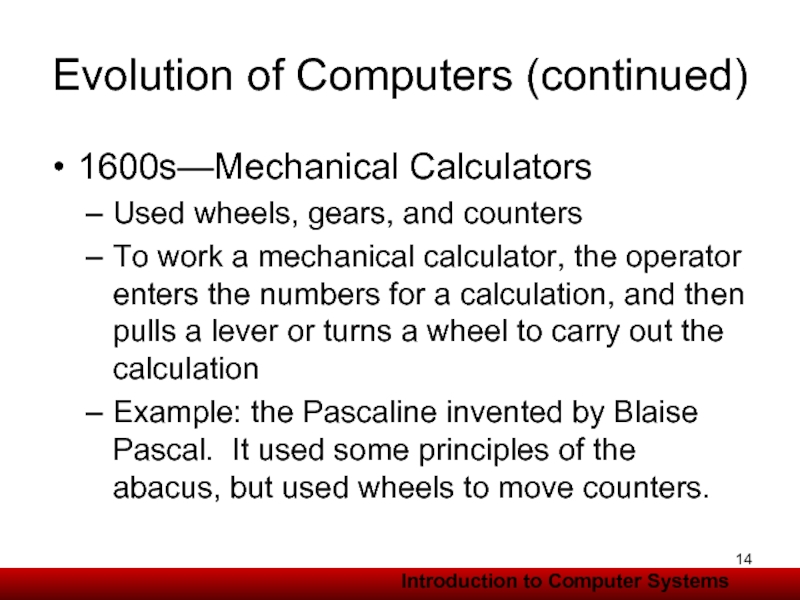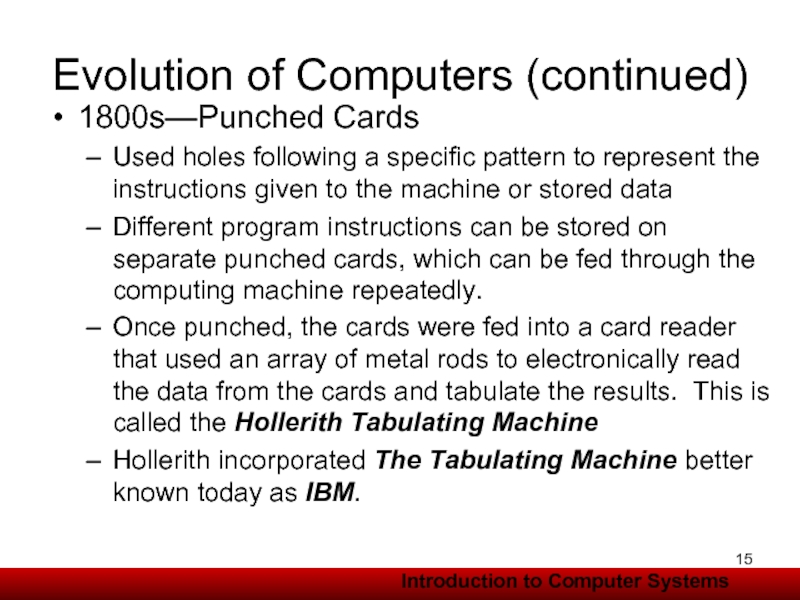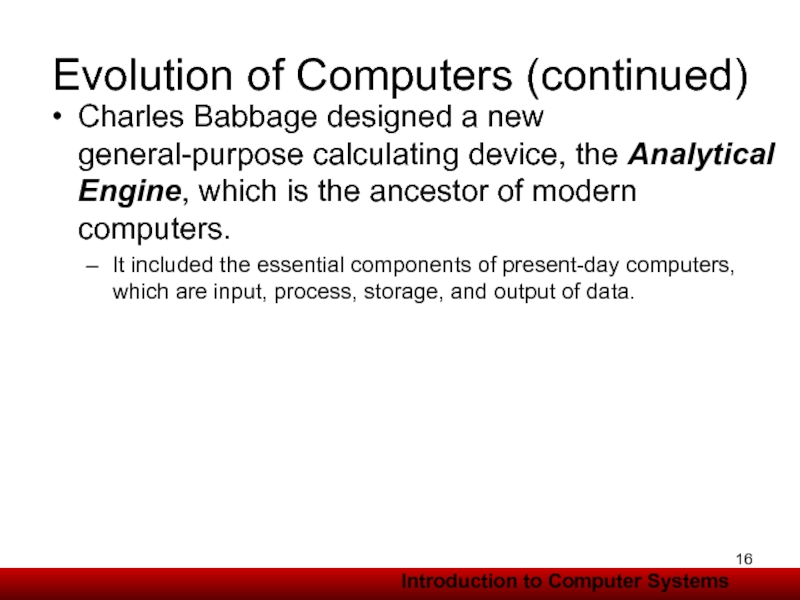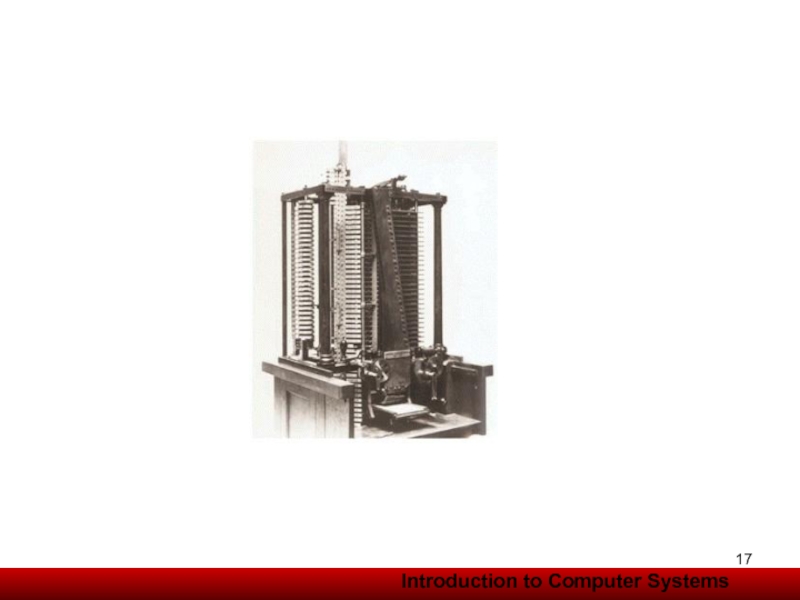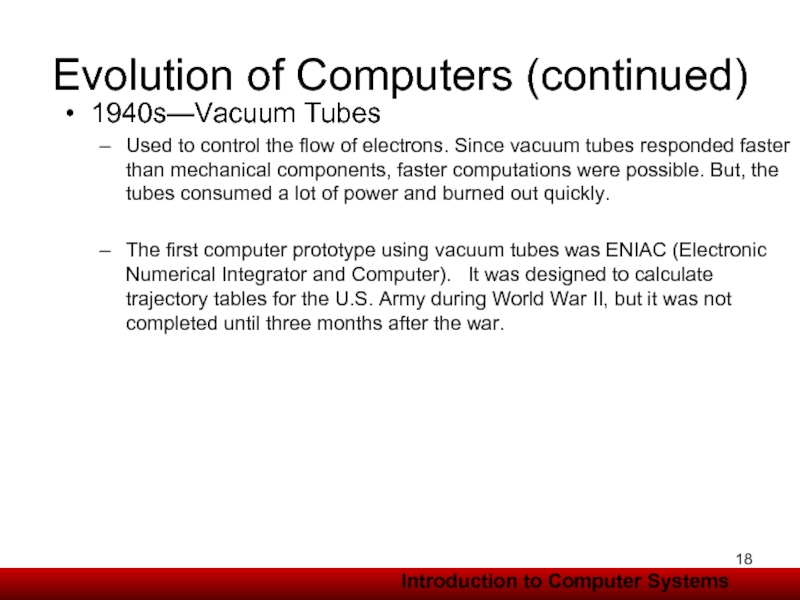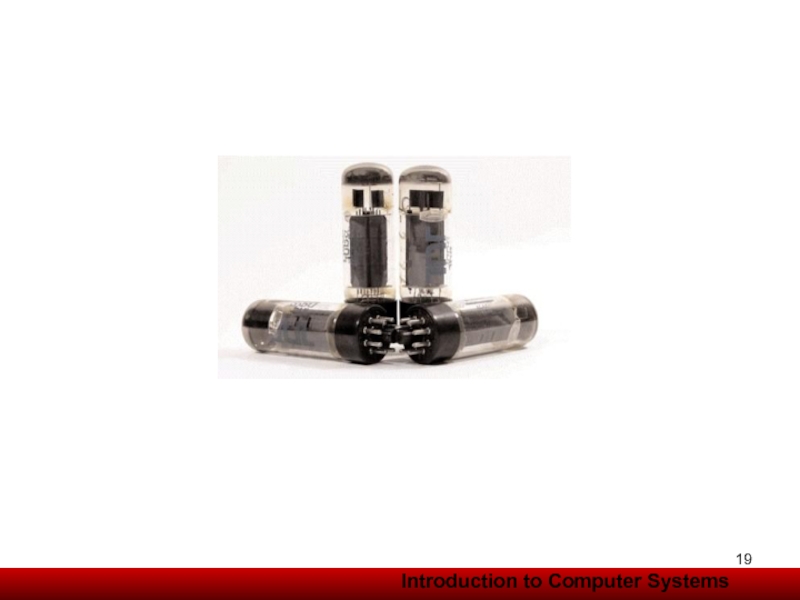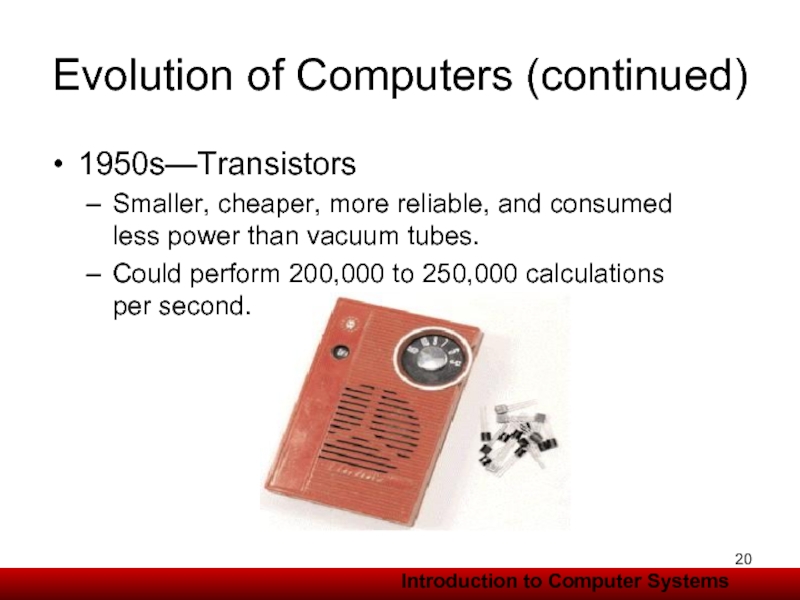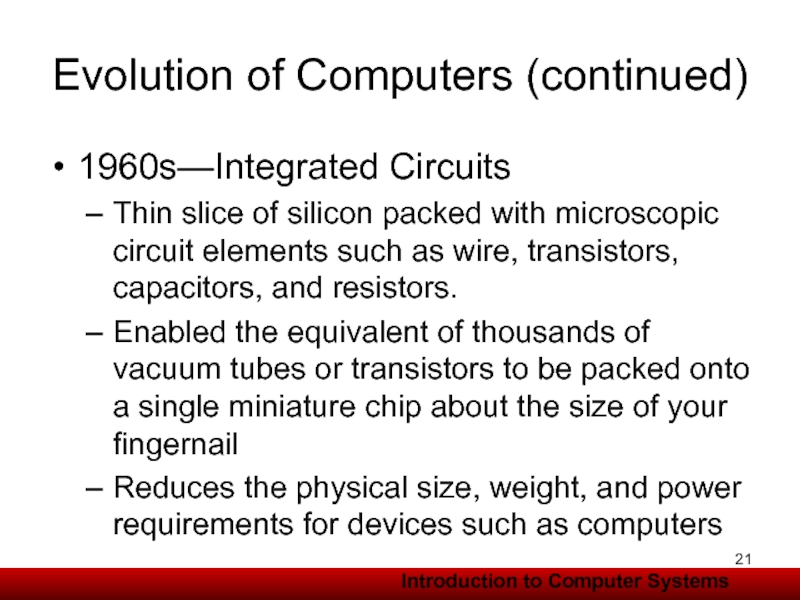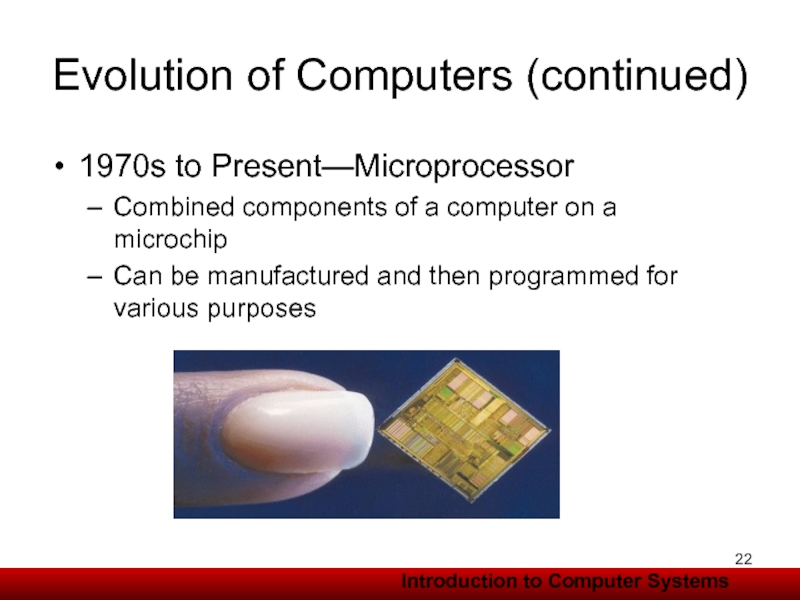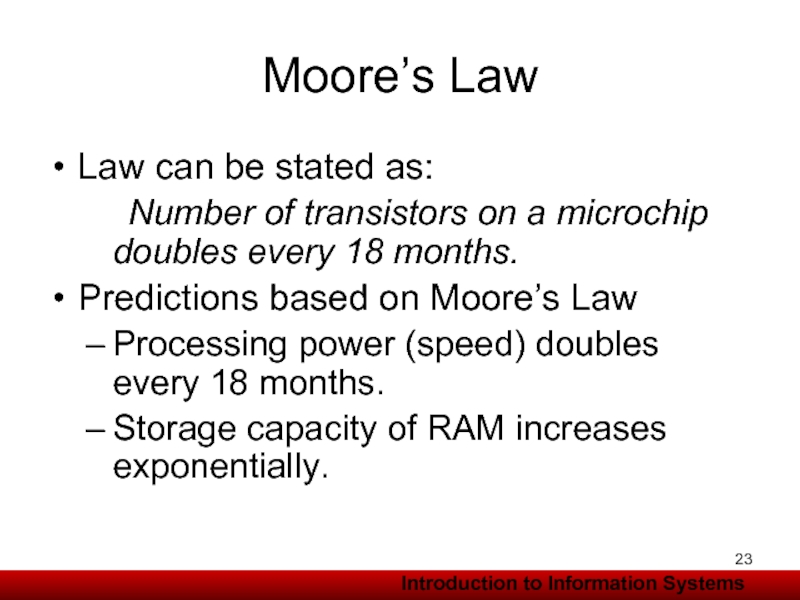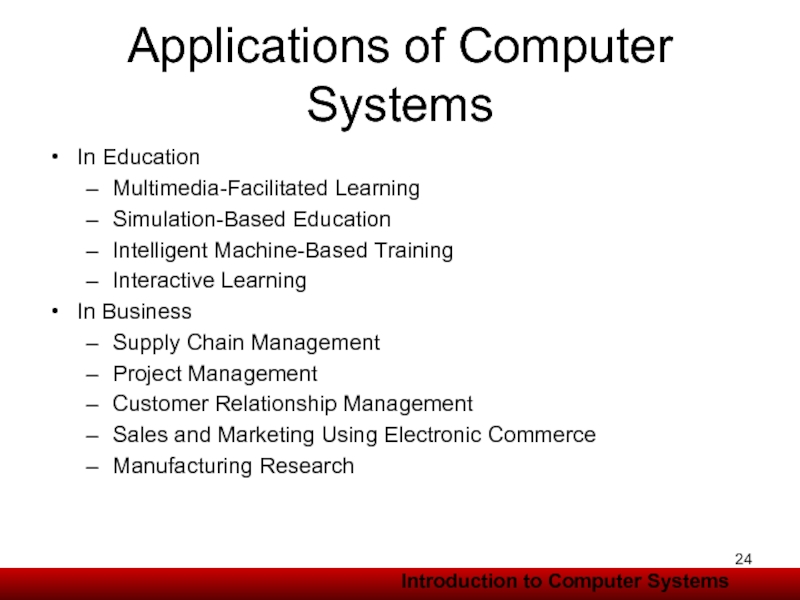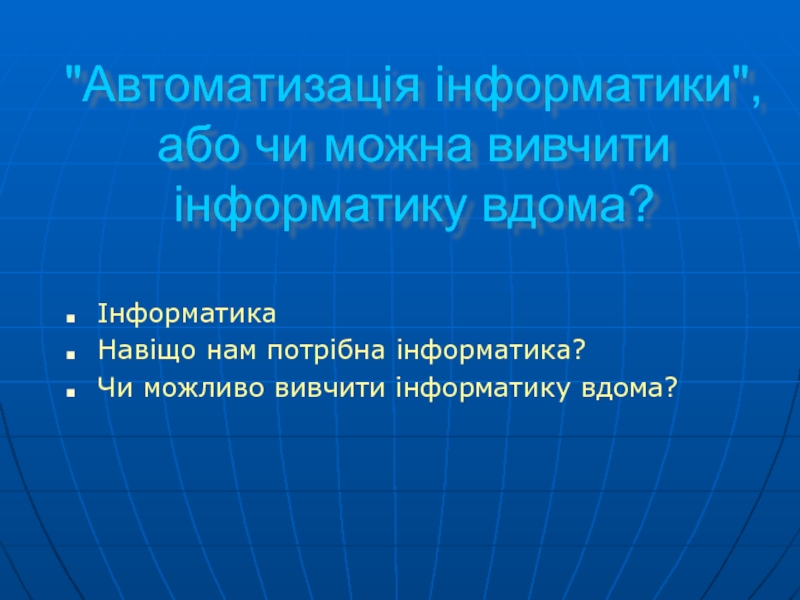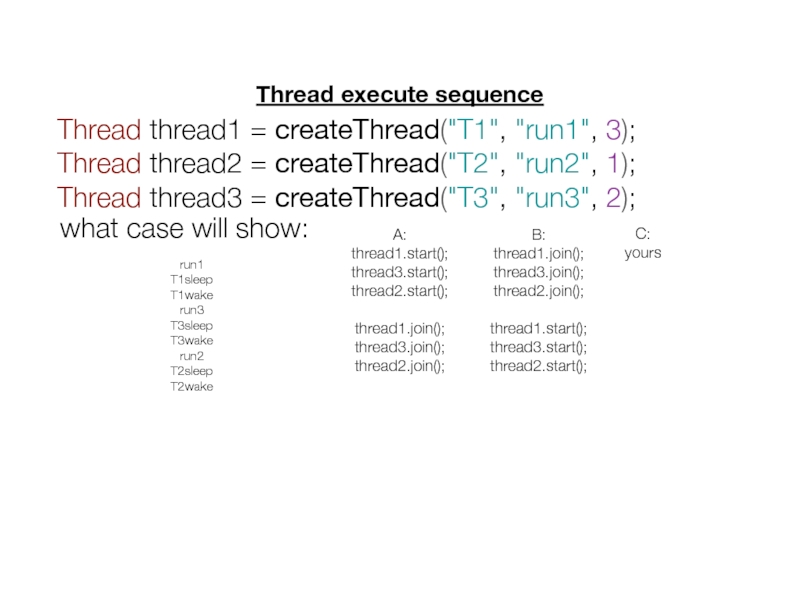- Главная
- Разное
- Дизайн
- Бизнес и предпринимательство
- Аналитика
- Образование
- Развлечения
- Красота и здоровье
- Финансы
- Государство
- Путешествия
- Спорт
- Недвижимость
- Армия
- Графика
- Культурология
- Еда и кулинария
- Лингвистика
- Английский язык
- Астрономия
- Алгебра
- Биология
- География
- Детские презентации
- Информатика
- История
- Литература
- Маркетинг
- Математика
- Медицина
- Менеджмент
- Музыка
- МХК
- Немецкий язык
- ОБЖ
- Обществознание
- Окружающий мир
- Педагогика
- Русский язык
- Технология
- Физика
- Философия
- Химия
- Шаблоны, картинки для презентаций
- Экология
- Экономика
- Юриспруденция
ICT Hardware, Software Requirements презентация
Содержание
- 1. ICT Hardware, Software Requirements
- 2. ICT Hardware/Software Requirements Microsoft Windows-based machine
- 3. Computer Systems Lecture 2 (part 1)
- 4. 2.1.1 Components of a Computer System
- 6. Hardware System
- 7. Components inside the System Unit
- 8. What is Software? Software is a set
- 9. Software System Two categories: operating system (OS)
- 10. Network System A network provides connections among
- 12. Evolution of Computers Needed calculation devices to
- 14. Evolution of Computers (continued) 1600s—Mechanical Calculators Used
- 15. Evolution of Computers (continued) 1800s—Punched Cards Used
- 16. Evolution of Computers (continued) Charles Babbage designed
- 18. Evolution of Computers (continued) 1940s—Vacuum Tubes
- 20. Evolution of Computers (continued) 1950s—Transistors Smaller,
- 21. Evolution of Computers (continued) 1960s—Integrated Circuits
- 22. Evolution of Computers (continued) 1970s to Present—Microprocessor
- 23. Moore’s Law Law can be stated as:
- 24. Applications of Computer Systems In Education
Слайд 1COURSE TEXTBOOK
June J. Parsons and Dan Oja, New Perspectives on Computer
Слайд 2ICT Hardware/Software Requirements
Microsoft Windows-based machine
To see movie files Windows compatible
Visual Basic 6.0 or higher is required.
Microsoft Access 2000 or higher is required.
WinZip application is required.
Слайд 3 Computer Systems
Lecture 2 (part 1)
2.1 Overview of Computer Systems
2.2
Слайд 42.1.1 Components of a Computer System
Hardware System
Software System—Operating System Software
Network System
Слайд 5 Subsystems of a Computer
Software
Operating System (Unix, Mac OS, Microsoft
Windows)
Web browser (Firefox, Internet Explorer)
Office productivity applications (Microsoft
Office, Star Office)
Hardware System
Keyboard
Monitor
System unit
Network System
Internet services (email)
Network connections (modems, network cards)
Слайд 7Components inside the System Unit
B. Power supply
E. Expansion card
C. Microprocessor
(underneath a cooling fan)
D. Expansion slot
G. IDE cable
F. Chipset
H. Disk drives
A. Motherboard
Слайд 8What is Software?
Software is a set of computer instructions or data.
Software receives input from the user and processes this input through the computer to produce output.
Software directs how the computer interacts with the user.
Software specifies how to process the user's data
Слайд 9Software System
Two categories: operating system (OS) software and application software.
Operating system
Examples of OS software:
Microsoft Windows, Unix, Mac OS
Application software is a set of one or more computer programs that helps a person carry out a task
Examples of application software:
Microsoft Word
Internet Explorer
Macromedia Dreamweaver
Adobe Acrobat Reader
Слайд 10Network System
A network provides connections among computers to enable computers on
Network users can also send messages to each other.
A network must be secured to protect data from unauthorized usage (e.g. using login name and password to gain access to a network).
Слайд 12Evolution of Computers
Needed calculation devices to keep track of accounting for
1200s—Manual Calculating Devices: the abacus
Слайд 14Evolution of Computers (continued)
1600s—Mechanical Calculators
Used wheels, gears, and counters
To work
Example: the Pascaline invented by Blaise Pascal. It used some principles of the abacus, but used wheels to move counters.
Слайд 15Evolution of Computers (continued)
1800s—Punched Cards
Used holes following a specific pattern to
Different program instructions can be stored on separate punched cards, which can be fed through the computing machine repeatedly.
Once punched, the cards were fed into a card reader that used an array of metal rods to electronically read the data from the cards and tabulate the results. This is called the Hollerith Tabulating Machine
Hollerith incorporated The Tabulating Machine better known today as IBM.
Слайд 16Evolution of Computers (continued)
Charles Babbage designed a new general-purpose calculating device,
It included the essential components of present-day computers, which are input, process, storage, and output of data.
Слайд 18Evolution of Computers (continued)
1940s—Vacuum Tubes
Used to control the flow of
The first computer prototype using vacuum tubes was ENIAC (Electronic Numerical Integrator and Computer). It was designed to calculate trajectory tables for the U.S. Army during World War II, but it was not completed until three months after the war.
Слайд 20Evolution of Computers (continued)
1950s—Transistors
Smaller, cheaper, more reliable, and consumed less
Could perform 200,000 to 250,000 calculations per second.
Слайд 21Evolution of Computers (continued)
1960s—Integrated Circuits
Thin slice of silicon packed with
Enabled the equivalent of thousands of vacuum tubes or transistors to be packed onto a single miniature chip about the size of your fingernail
Reduces the physical size, weight, and power requirements for devices such as computers
Слайд 22Evolution of Computers (continued)
1970s to Present—Microprocessor
Combined components of a computer
Can be manufactured and then programmed for various purposes
Слайд 23Moore’s Law
Law can be stated as:
Number of transistors on a
Predictions based on Moore’s Law
Processing power (speed) doubles every 18 months.
Storage capacity of RAM increases exponentially.
Слайд 24Applications of Computer Systems
In Education
Multimedia-Facilitated Learning
Simulation-Based Education
Intelligent Machine-Based
Interactive Learning
In Business
Supply Chain Management
Project Management
Customer Relationship Management
Sales and Marketing Using Electronic Commerce
Manufacturing Research
